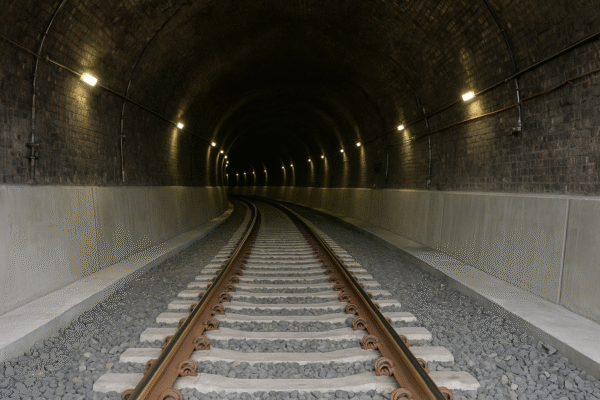London, UK — An innovative tunnel strengthening technique has saved approximately £10 million during comprehensive repairs to the 175-year-old Blackheath Tunnel, located between Bristol Parkway and Stoke Gifford. This pioneering method led by Network Rail may set a new standard for sustainable infrastructure work across the UK.
A Historic Tunnel Facing Modern Challenges
First opened in 1849, the 1.6-kilometer tunnel is a vital link in the UK’s rail network. Over time, water infiltration has become a serious issue, leading to damage to the tracks, electrical systems, and the original Victorian infrastructure.
Challenges of Traditional Repair Methods
Traditionally, maintenance would rely on repeated weekend closures to perform repairs. However, these short closures proved inefficient—up to half of each weekend was consumed by transporting materials in and out, greatly reducing actual repair time.
To overcome this, Network Rail opted for longer ten-week closures, allowing focused, uninterrupted work with fewer logistical limits. This strategy allowed more meaningful structural improvements to proceed efficiently.
The New Grouting and Waterproofing Technique
At the heart of the project lies an innovative grouting and waterproofing method:
- Engineers injected expansive grout into surrounding soil, compressing loose sand and gravel to stabilize the ground.
- A second grout layer was applied directly onto the tunnel lining—especially in areas where water seepage was worst—to create a lasting waterproof barrier.
- A high-precision monitoring system was installed to detect movements as small as 0.01 mm, ensuring structural safety during and after repair work.
This approach transformed both the tunnel’s integrity and durability.
About the Project and Scope
During the repairs, crews also:
- Cleaned soot from the tunnel lining.
- Replaced thousands of bricks.
- Installed a new tunnel lining.
- Rebuilt drainage systems.
- Removed waterlogged “wet bed” sections.
- Conducted detailed structural surveys.
These steps positioned the tunnel for long-term resilience.
Major Cost Savings and Future Impacts
Network Rail estimates that this technique has generated a £10 million cost saving over traditional repair methods. These savings can be reinvested in other parts of the rail network to enhance infrastructure and reliability.
Given its success, Network Rail is evaluating this method for use in refurbishing other historic rail tunnels across the country—particularly those where conventional excavation or access isn’t feasible.
Boosting Reliability and Rail Sustainability
David Davidson, COO of South Eastern Railway, noted that the project not only strengthened structural integrity but also significantly improved reliability and safety for future operations.
Engineering experts believe that such forward-looking methods can reduce disruptions and environmental impacts while delivering more cost-efficient results for critical infrastructure projects.
What This Means for Passengers
In practical terms, rail users will enjoy smoother, more reliable journeys through the tunnel. Frequent disruption is expected to decline, and the infrastructure will better withstand the elements for years to come—making rail travel a more dependable and sustainable option.
A Model for Future Repairs
The success at Blackheath Tunnel provides a compelling blueprint for future projects. By combining innovative materials, advanced monitoring, and longer but more productive closures, railway authorities can achieve safer, faster, and more environmentally conscious outcomes.
It also positions the UK as a leader in pioneering methods for preserving historical transport assets while adapting to modern demands.
Final Thoughts
The Blackheath Tunnel project stands as a testament to the power of innovation in infrastructure repair. It has delivered major cost savings, extended the tunnel’s lifespan, and improved safety—all with minimal disruption and maximum efficiency.
As Network Rail now looks to replicate this success across its network, travelers and communities alike stand to benefit from a stronger, greener, and more reliable railway system.
For more travel news like this, keep reading Global Travel Wire














